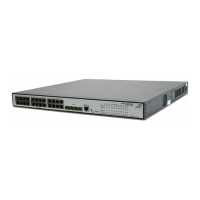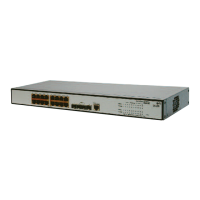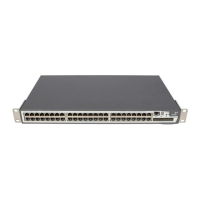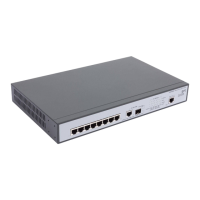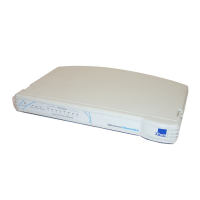Defining Multiple STP Instance Settings 237
■ Alternate — Provides an alternate path to the root switch from the
root interface.
■ Backup — Provides a backup path to the designated port path
toward the Spanning Tree leaves. Backup ports occur only when
two ports are connected in a loop by a point-to-point link, or when
a LAN has two or more connections connected to a shared
segment.
■ Disabled — The port is not participating in the Spanning Tree.
■ Mode — Indicates the STP mode by which STP is enabled on the
device. The possible field values are:
■ Classic STP — Classic STP is enabled on the device. This is the
default value.
■ Rapid STP — Rapid STP is enabled on the device.
■ Multiple STP — Multiple STP is enabled on the device.
■ Type — Indicates whether the port is a Boundary or Master port. The
possible field values are:
■ Boundary Port — Indicates that the port is a Boundary port. A
Boundary port attaches MST bridges to LANs in an outlying region.
If the port is a Boundary port, this field also indicates whether the
device on the other side of the link is working in RSTP or STP mode
■ Master Port — Indicates the port is a master port. A Master port
provides connectivity from a MSTP region to the outlying CIST root.
■ Port Priority — Priority value of the port. The priority value influences
the port choice when a bridge has two ports connected in a loop. The
priority range is between 0-240. The priority value is determined in
increments of 16.
■ Path Cost — Indicates the port contribution to the root path cost. The
path cost is adjusted to a higher or lower value, and is used to forward
traffic when a path is re-routed.
■ Port State — Displays the current STP state of a port. If enabled, the
port state determines what forwarding action is taken on traffic.
Possible port states are:
■ Forwarding — Indicates that the port forwards traffic while
learning MAC addresses.
■ Designated Cost — Indicates the cost of the port participating in the
STP topology. Ports with a lower cost are less likely to be blocked if
STP detects loops.

